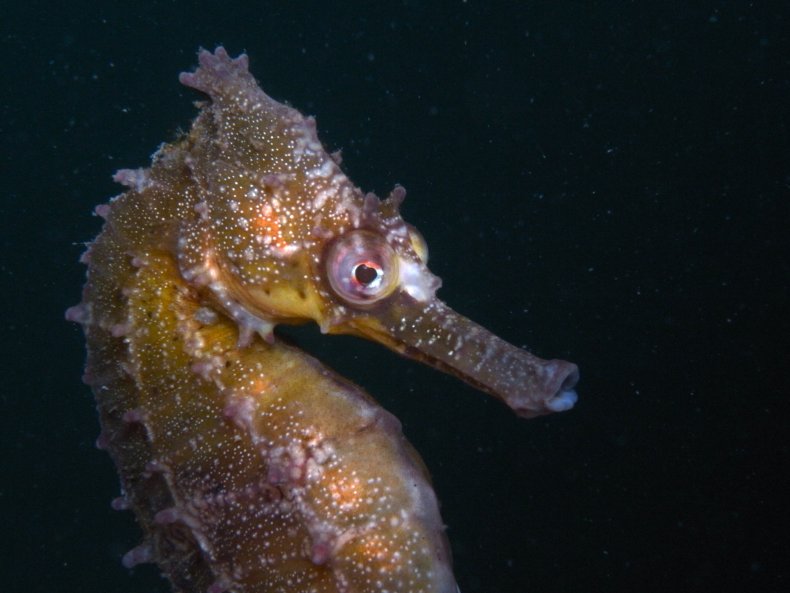More than 300 baby seahorses have been unleashed into the waters off Australia in a last-hope attempt to pull the species back from the brink of extinction.
The seahorses, known as White's seahorses, have seen huge declines in their populations over the past few years. This is because of disturbances to their habitats on the east coast of Australia.
"Twenty years ago, I could go diving here and I'd find 20 to 30 seahorses a dive," David Harasti, a diver and scientist at the New South Wales (NSW) Department of Primary Industries (DPI), told local news outlet ABC Australia. "But if I go there now, I'd be lucky to find one or two."

White's seahorses, also known as New Holland seahorses, or Sydney seahorses, are native to Australia, and are one of four Australian such species, growing to around 5 inches long. They are found in the shallows off the coast, between the surface and around 60 to 80 feet deep, according to the Australian Museum. Despite once being commonplace, especially in Sydney Harbor, White's seahorses are now considered endangered in the state of New South Wales.
As a result of the seahorses' declining population, Sydney Aquarium runs a breeding program for them. Here, they are encouraged to breed, and after the male gives birth to the young, they are released back into the ocean in special "hotels".
These hotels are metal structures on the seafloor designed to provide shelter for the juvenile seahorses. The structures gradually accumulate algae, sponges and coral once underwater, mimicking the seahorses' ideal habitat.
"That was the best one we've ever done—350 baby seahorses sitting around in their new home," Harasti said of the most-recent seahorse release. "It's great to see, and I can't wait to go back in a couple of weeks and see how they're doing."
This species is so threatened mainly because of human actions destroying their natural habitats.
Ninety percent of the soft coral and sponge habitats that are crucial for the seahorses have declined at Port Stephens, a previous seahorse hotspot, according to the NSW DPI. These declines are thought to be because of the installation of boat anchoring and moorings, and sand movement.

In Sydney Harbor, declining habitats causes the seahorses to live on swimming nets in the harbor instead. However, because of these nets being cleaned regularly, this leads to the creatures being further displaced.
Additionally, the intense flooding in recent years has caused sediment washout in the shallows of the coast, further inundating the seahorses' habitats.
Do you have a tip on a science story that Newsweek should be covering? Do you have a question about seahorses? Let us know via This email address is being protected from spambots. You need JavaScript enabled to view it..

